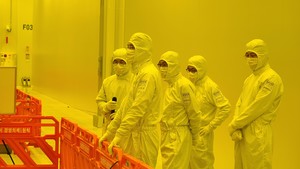
[이코노믹리뷰=박정훈 기자] There is a growing possibility that this year’s semiconductor’super cycle’ will become a reality. In the midst of this, there is a saying that it is necessary to respond to market changes through flexible action plans.
“It’s different from before! As before…!”
Global semiconductor industry market research company’DRAMeXchange’ announced the average transaction price of DRAM (based on DDR4 8Gb for PC) for one month in January 2021 on the 30th of last month. The price of DRAM is $3.00 in 2020. It recorded a growth rate of about 5.26% compared to December 2010.
The increase in DRAM transaction prices compared to the previous month has been a hot topic in the semiconductor industry in about eight months since May 2020.
The rise in semiconductor prices continues until February. According to the newly updated survey by DRAMeXchange on the 3rd (local time), the transaction price of DRAM for PC (based on DDR4 8Gb for PC) rose to 3.93 dollars. The global transaction price of’LPDDR3′, a mobile memory semiconductor required for smartphones, also increased by about 5% compared to the fourth quarter of 2020.

It is said that this year’s semiconductor is different from the super cycle that lasted from 2017 to 2018.
At the time, the DRAM transaction price temporarily rose to $8 due to a surge in global demand, and the super cycle was completed. However, due to the concentrated supply during this period, semiconductor prices from 2019 to 2020 repeat their fluctuations due to a clear downward curve. On August 20, 2019, the transaction price of DRAM dropped to $2.54.
How about now? From the second half of last year, DRAM prices recovered to the $3 range thanks to the arrival of the replacement cycle of server semiconductors and the commercialization of 5G smartphones, but the persistence was insufficient to view this as an atmosphere reversal. However, there is an interpretation from the perspective that the trend of semiconductor price rebound from January to February this year is definitely’different from before’.
In the investment industry, which is keeping an eye on the current situation in the semiconductor industry, the opinion that “a full-fledged semiconductor supercycle will begin in the near future.”
Researcher Kim Young-gun of Mirae Asset Daewoo predicted, “In 2021, a price increase led by demand will appear in about three years after the great boom in the semiconductor industry that lasted from 2017 to 2018.”
Researcher Lee Soon-Hak of Hanwha Investment & Securities predicts, “This year, the DRAM market will continue to see an increasing demand and limited supply.” KB Securities researcher Dongwon Kim said, “The supply of the global DRAM market in 2021 will be very limited, conscious of the price decline due to oversupply last year, but each IT companies resumed data center investment, Demand will increase due to increased supply and so on, which will soon exceed the level of supply,” he said. “This trend is expected to appear in the NAND flash trading market as well as DRAM.”

Semiconductor companies “completely prepared”
Major semiconductor companies around the world, closely watching the signs of the super cycle, are preparing specific action plans.
According to the analysis of the semiconductor industry by Yuanta Securities, the combined facility investment of the five companies leading the semiconductor industry, including Intel, Samsung Electronics, SK Hynix, Micron, and TSMC, is expected to increase in scale from last year.
Recently, TSMC of Taiwan, which has the largest share of the global foundry (consigned semiconductor production) market share, announced that it will invest an additional 30 trillion won in 2021 alone. Yuanta Securities forecasts that the total facility investment of the five companies, which recorded 74.3 billion dollars (about 83.52 trillion won) last year, will increase to 95.2 billion dollars (about 107.524 billion won) in 2021. If this forecast is realized as it is, the capital investments of the five companies will be the largest ever.
The readiness of the super cycle of major domestic semiconductor companies is also noticeable.
In a recent announcement of 2020 annual results, Samsung Electronics said, “In the first quarter of 2021, the market demand for all semiconductors produced by each process is expected to increase, and the semiconductor inventory that has overflowed in the market has been exhausted, “The problem of shortage of semiconductor supply will appear,” he said. “We will operate the production line efficiently to ensure a stable supply of products, and if necessary, we will make additional investments to expand production capacity.”
Reuters reported on the 5th (local time), “Samsung Electronics has requested a 900 billion won tax reduction benefit from the Texas state government under the condition of expanding the semiconductor plant in Austin, Texas.” Regarding this, Samsung Electronics said, “There is no confirmed content, but various methods for expansion of production facilities are being reviewed internally.”
On the 1st, SK Hynix is preparing for the completion of the M16 fab, which has been equipped with extreme ultraviolet (EUV) exposure equipment for ultra-fine processes.
From the second half of this year, SK Hynix is planning to produce 10-nano class 4G la DRAM through the M16 process operation. At the M16 Completion Ceremony, SK Chairman Tae-won Choi said, “There were internal and external opinions concerned about the completion plan of M16 amid the bad news of the semiconductor industry.” I’m looking forward to more things.”
